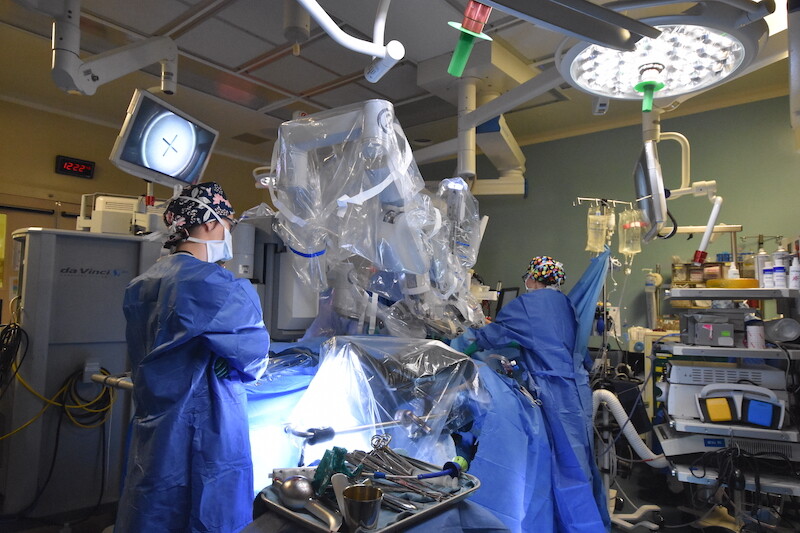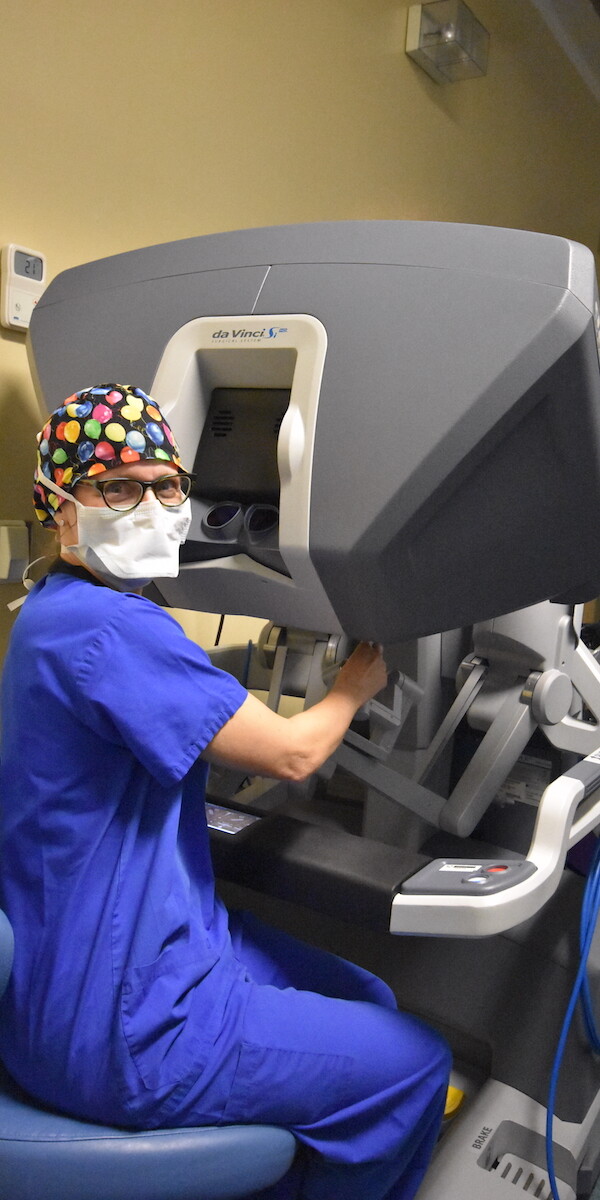Mobile Menu
- Education
- Faculty
- Research
- News & Events
- Divisions
- Equity, Diversity & Inclusion
- About Us

Ontario Health recently announced new funding to support robotic surgery for hysterectomies provided to endometrial cancer patients with BMI over 35. These increased resources will make it possible for more patients to undergo minimally invasive gynaecologic surgery, and should lead to better outcomes for those patients.
The new funding — which is also being provided for prostatectomy and nephrectomy — is in part the result of more than a decade of research and advocacy work by faculty in our Department, and will benefit several sites in our hospital network.
In conversations with provincial health authorities, members of our faculty have emphasized the benefits of robotic surgery for patients who, due to their higher BMI, cannot undergo laparoscopic forms of minimally invasive surgery and would therefore otherwise require open surgery.
“This news is important because there is level 1 evidence that minimally invasive surgery — whether laparoscopic or robotic — is better than open surgery in endometrial cancer, but we just cannot perform laparoscopy on certain individuals who have larger bodies for many technical reasons,” said Dr. Sarah Ferguson, a professor in our Department and a gynaecologic oncologist at UHN’s Princess Margaret Cancer Centre as well as Sinai Health System.
“When we have access to the robotic platform, we can increase the minimally invasive surgery rate. This isn’t about robotic surgery being better than laparoscopy — rather, it is an acknowledgment that robotic surgery and laparoscopy are both tools we need to have available so that people who cannot undergo a laparoscopic procedure can still be offered the best care.”

Hospitals performing robotic surgery in Ontario have typically purchased or rented the robot with philanthropic support, and there are incremental costs associated with disposable supplies for the robot. With the new funding, hospitals will receive additional funds per case to cover those incremental costs.
For patients, there are numerous benefits of receiving minimally invasive surgical procedures compared to open surgery, including a quicker recovery period, a shorter length of stay, and a decreased risk of wound complications.
“This population doesn’t have a big voice — there is a lot of discrimination and weight bias that they experience in their health journey. But they can have just as good outcomes if they’re treated properly,” said Ferguson, who is also the gynaecologic cancer lead with Cancer Care Ontario.
“When we met with the province, we really advocated for this as an equity issue. It’s about offering the best practice to all individuals, regardless of who they are. I think that idea really resonated with the province.”
Ferguson credits a number of members of our Department for their diligent work raising awareness of this issue over the years, including associate professor Dr. Marcus Bernardini, recently graduated resident Dr. Maria Cusimano, assistant professor Dr. Andrea Simpson, and former professor Dr. Barry Rosen.
“I would say the University of Toronto really led this,” Ferguson said. “All the hospitals in our network have seen the value of having a robot, which I think is forward-thinking, especially when there wasn’t funding for it. This has in turn allowed us to offer robotic surgery training for our surgeons.”
Ferguson hopes that the new funding from the government could spur more hospitals to invest in robotic surgery. As Cancer Care Ontario and Ontario Health re-evaluate other indications, Ferguson is also hopeful that there will eventually be indications for non-cancers, including atypical hyperplasia.
“While the province is data-driven, they are also motivated by equity,” Ferguson said. “They have listened to the research and evidence we have brought forward, which is great.
“Ultimately, this is about being able to tailor treatments to our patients so that we can give them the best possible care.”
